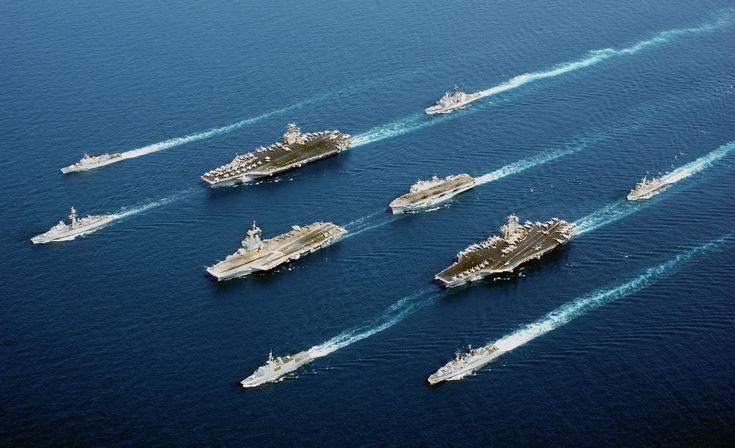The Vital Role of Airflow Monitoring in Defence & Naval Operations
In the complex and demanding environment of defence and naval operations, maintaining optimal airflow is crucial. The implementation of advanced airflow monitoring systems is essential for ensuring the safety, efficiency, and effectiveness of various military applications. This comprehensive guide explores the importance, methods, and technologies of airflow monitoring in the defence and naval sectors.

The Importance of Airflow Monitoring
Enhancing Equipment Performance
Airflow monitoring is vital for the optimal performance of military equipment. Many defence systems, such as radar and communication equipment, require precise temperature control, which is directly influenced by airflow. Efficient airflow ensures that these systems do not overheat, thus maintaining their operational integrity.
Ensuring Personnel Safety
In naval environments, particularly in submarines and ships, proper ventilation is crucial for the health and safety of the crew. Monitoring airflow helps in maintaining air quality, controlling humidity, and preventing the buildup of hazardous gases. This is essential for ensuring that the crew operates in a safe and comfortable environment.
Operational Efficiency
Effective airflow management contributes to the overall operational efficiency of military operations. By ensuring that systems function within their optimal temperature ranges, the likelihood of equipment failure is reduced. This reliability is crucial during critical missions where equipment malfunction can have severe consequences.
Technologies Used in Airflow Monitoring
Anemometers
Anemometers are commonly used to measure airflow speed and direction. In defence applications, these devices help monitor the ventilation systems of ships and submarines, ensuring that the airflow is within the desired parameters.
Differential Pressure Sensors
These sensors measure the pressure difference between two points, which is directly related to airflow. In naval applications, differential pressure sensors are used to monitor and control the airflow in ventilation systems, ensuring the removal of contaminants and maintaining air quality.
Thermal Anemometers
Thermal anemometers use heat to measure airflow speed. These are particularly useful in environments where traditional anemometers might not work effectively due to turbulent or very low-speed airflow. In defence, they are used in various applications, including the monitoring of cleanrooms and other controlled environments.
Advanced Control Systems
Modern airflow monitoring systems often integrate advanced control mechanisms that can automatically adjust airflow based on real-time data. These systems use a combination of sensors and software to maintain optimal conditions, enhancing both safety and performance.
Applications of Airflow Monitoring in Defence
Submarine Ventilation Systems
In submarines, maintaining optimal airflow is crucial due to the enclosed environment. Airflow monitoring systems ensure that the air remains breathable, free of contaminants, and at the right humidity levels. This is critical for the health and efficiency of the crew, as well as the proper functioning of sensitive equipment.
Missile Systems
Missile systems require precise environmental conditions to function correctly. Airflow monitoring ensures that these systems do not overheat and that the internal environment remains within the specified parameters. This reliability is essential for the successful deployment and operation of missile systems.
Aircraft Environmental Control Systems
Military aircraft operate in diverse and often extreme environments. Airflow monitoring within these aircraft ensures that the environmental control systems maintain the right temperature and air quality, crucial for both the pilots' and equipment's performance.
Ship Ventilation
On naval ships, proper airflow is necessary for the comfort and safety of the crew, as well as the maintenance of onboard equipment. Monitoring systems ensure that air is circulated properly throughout the ship, preventing the buildup of hazardous gases and maintaining air quality.
Challenges in Airflow Monitoring
Environmental Factors
Defence and naval environments are often subject to extreme conditions, such as high humidity, temperature variations, and exposure to corrosive substances. These factors can impact the accuracy and reliability of airflow monitoring systems. Developing robust systems that can withstand these conditions is a significant challenge.
Integration with Existing Systems
Integrating modern airflow monitoring systems with existing military infrastructure can be complex. Ensuring compatibility and seamless operation without disrupting current systems requires careful planning and execution.
Data Security
In military applications, data security is paramount. Airflow monitoring systems must ensure that the data they collect and transmit is secure from potential cyber threats. This involves implementing advanced encryption and secure communication protocols.
Future Trends in Airflow Monitoring
IoT and Smart Sensors
The integration of Internet of Things (IoT) technologies is revolutionizing airflow monitoring. Smart sensors connected to a central network can provide real-time data and enable predictive maintenance. This allows for proactive management of airflow systems, reducing downtime and enhancing reliability.
Artificial Intelligence
Artificial intelligence (AI) is playing an increasingly significant role in the analysis and optimization of airflow. AI algorithms can analyze large datasets to identify patterns and predict potential issues before they become critical. This proactive approach can significantly enhance the efficiency and reliability of military operations.
Enhanced Materials and Design
Advancements in materials science are leading to the development of more durable and efficient airflow monitoring systems. These new materials can withstand harsh environments and provide more accurate and reliable measurements.
Airflow monitoring in defence and naval operations is a critical component for maintaining safety, efficiency, and performance. With the advancement of technologies such as IoT, AI, and enhanced materials, the future of airflow monitoring looks promising. By understanding the importance, challenges, and applications of these systems, military operations can continue to improve and adapt to the ever-evolving demands of modern warfare.






































































